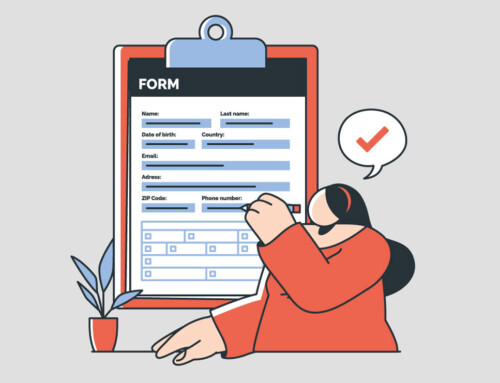Contents
Essentials of Drafting a Contract
Drafting a contract is a critical process that establishes a legally binding agreement between parties, outlining their rights and obligations. This article explores the foundational elements necessary for creating clear, enforceable contracts. It explains key components such as offers, acceptance, consideration, mutual assent, capacity, and legality, emphasizing the importance of precise language, logical organization, and essential clauses to avoid ambiguities and disputes. By understanding these essentials, parties can craft contracts that are comprehensive, legally sound, and capable of mitigating risks, ultimately fostering trust and professionalism in their agreements.
What is a contract?
A contract is a legally binding agreement between two or more parties that outlines their rights and obligations. It is formed when one party makes an offer, the other party accepts the offer, and there is mutual consideration (something of value exchanged between the parties). Contracts can be written, oral, or implied by the conduct of the parties.
The key elements of drafting a contract include:
- Offer: One party proposes an arrangement or terms to the other party.
- Acceptance: The other party agrees to the proposed terms.
- Consideration: Something of value is exchanged between the parties, such as goods, services, money, or a promise to perform or refrain from performing a specific act.
- Mutual Assent: Both parties must have a mutual understanding and agreement on the terms and conditions of the contract.
- Capacity: The parties must have the legal capacity to enter into a contract, meaning they are of legal age and sound mind.
- Legality: The contract’s subject matter must be legal and not against public policy.
Contracts serve to clearly define the expectations and obligations of each party, provide a legal framework for resolving disputes, and establish the consequences for non-compliance or breach of the agreement.
Why Is Drafting a Contract Important?
Drafting a contract agreement involves various practical aspects to ensure that the agreement is clear, enforceable, and comprehensive. Here are some key reasons:
Understanding the Parties’ Needs
- Clarify Objectives: Ensure you fully understand the goals and expectations of all parties involved.
- Gather Information: Collect all necessary details about the parties, such as legal names, addresses, and relevant background information.
Clear and Precise Language
- Avoid Ambiguity: Use clear and unambiguous language to prevent misunderstandings.
- Define Terms: Provide precise definitions for key terms used throughout the contract.
Structure and Organization
- Logical Layout: Organize the contract into sections with headings for easy navigation.
- Numbered Clauses: Use numbered clauses and sub-clauses to enhance clarity and reference.
Key Clauses and Terms
- Scope of Work: Clearly outline the services or products to be provided.
- Payment Terms: Specify the payment amounts, schedule, and method.
- Duration and Termination: State the contract’s start date, duration, and conditions for termination.
- Confidentiality: Include clauses to protect sensitive information.
- Dispute Resolution: Outline methods for resolving disputes, such as mediation or arbitration.
Legal Compliance
- Applicable Laws: Ensure the contract complies with relevant laws and regulations.
- Jurisdiction: Specify the governing law and jurisdiction for resolving disputes.
Negotiation and Flexibility
- Prepare for Negotiation: Be ready to negotiate terms to reach a mutually acceptable agreement.
- Flexibility: Allow room for amendments and adjustments to accommodate future changes.
Risk Management
- Identify Risks: Recognize potential risks and include clauses to mitigate them.
- Indemnity and Liability: Address liability issues and include indemnity clauses to protect against losses.
Review and Revision
- Draft Review: Review the draft carefully to identify and correct errors or omissions.
- Legal Advice: Seek legal counsel to ensure the contract is legally sound and enforceable.
Finalization and Execution
- Signatures: Ensure all parties sign the contract, including authorized representatives.
- Dates: Include the date of execution to establish the contract’s effective date.
- Copies: Provide copies to all parties for their records.
Ongoing Management
- Monitoring Compliance: Monitor adherence to the contract’s terms and conditions.
- Amendments: Document any changes or amendments to the contract in writing.
In summary, drafting a contract is essential for ensuring clarity, legal protection, dispute resolution, accurate record-keeping, risk management, enforceability, and fostering professionalism and trust between the parties involved.
Terms and Clauses of a Contract
Terms and clauses are fundamental components of a contract that define the rights, obligations, and responsibilities of the parties involved.
Terms
Terms refer to the essential elements and conditions of the contract that define the scope and expectations of the agreement. They are the building blocks of the contract and include:
- Duration: Specifies the start date and length of the contract.
- Scope of Work: Defines the work or services to be performed under the contract.
- Parties: Identifies the parties involved in the contract, including their legal names and contact information.
- Definitions: Provides clear definitions of key terms used throughout the contract to avoid ambiguity.
- Responsibilities and Obligations: Details the duties and responsibilities of each party.
- Deliverables: Specifies what products, services, or results are to be delivered under the contract.
- Consideration: Defines what each party is offering to the other (e.g., services for payment).
Clauses
Clauses are specific provisions or sections within a contract that address particular aspects of the agreement. They provide detailed rules and stipulations that govern the relationship between the parties. Common types of clauses include:
- Payment Clause: Specifies the amount to be paid, payment schedule, and payment method.
- Confidentiality Clause: Ensures that sensitive information shared between the parties remains confidential.
- Termination Clause: Outlines the conditions under which the contract can be terminated by either party.
- Dispute Resolution Clause: Specifies how disputes will be resolved, such as through mediation, arbitration, or litigation.
- Force Majeure Clause: Addresses what happens if unforeseen events (e.g., natural disasters, war) prevent parties from fulfilling their obligations.
- Governing Law Clause: States which jurisdiction’s laws will govern the contract.
- Indemnity Clause: Details the compensation one party will provide to the other in case of losses or damages.
How to Draft a Contract?
Drafting a contracts involves several key steps to ensure that the agreement is clear, comprehensive, and legally binding.
Identify the Parties Involved: Clearly state the full names of all parties involved in the contract. Include addresses and any other relevant details.
Title of the Contract: Provide a clear and descriptive title for the contract to help identify the purpose of the agreement.
Introduction and Recitals: Begin with an introductory statement that outlines the nature of the agreement. Follow this with a section providing background information on the reasons the parties are entering into the agreement, typically presented as “Whereas” statements.
Definitions: Define key terms used in the contract to avoid ambiguity.
Terms and Conditions: The obligations of the parties should clearly outline the responsibilities and duties of each party involved in the contract. Payment terms need to be specified, including the payment amounts, due dates, and methods of payment. The contract should state the start date and its duration. Additionally, it should detail the conditions under which the contract can be terminated by either party.
Confidentiality Clause: Include a confidentiality clause to protect sensitive information shared between the parties.
Dispute Resolution: Specify how disputes will be resolved, whether through mediation, arbitration, or litigation.
Governing Law: State which jurisdiction’s laws will govern the contract.
Signatures: Provide spaces for the signatures of all parties involved, along with the date of signing.
Miscellaneous Provisions: Declare that the contract constitutes the entire agreement between the parties. Outline the process for making any amendments to the contract. Additionally, specify whether the rights or obligations under the contract can be transferred to another party.
Different Types of Legal Contracts
Legal contracts can be categorized based on various criteria, including the nature of the agreement, the parties involved, and the specific terms and conditions. Here are some common types of legal contracts:
- Bilateral and Unilateral Contracts
- Bilateral Contracts: Involve mutual promises between two parties. Each party commits to fulfilling certain obligations (e.g., a sales contract where one party agrees to sell and the other agrees to buy).
- Unilateral Contracts: Involve a promise made by one party in exchange for the performance of an act by another party (e.g., a reward contract where one party promises to pay a reward if someone finds their lost pet).
- Express and Implied Contracts
- Express Contracts: Terms are explicitly stated, either orally or in writing (e.g., a written employment contract).
- Implied Contracts: Terms are inferred from the actions, conduct, or circumstances of the parties (e.g., a patient receiving treatment in a hospital implies consent to pay for the services).
- Executed and Executory Contracts
- Executed Contracts: Both parties have fully performed their obligations under the contract (e.g., a completed real estate sale).
- Executory Contracts: Some or all of the obligations are yet to be performed (e.g., an ongoing service agreement).
- Void, Voidable, and Unenforceable Contracts
- Void Contracts: Not legally enforceable from the beginning due to illegality or lack of capacity (e.g., a contract for illegal activities).
- Voidable Contracts: Valid but can be legally voided by one of the parties (e.g., a contract entered into by a minor).
- Unenforceable Contracts: Valid contracts but cannot be enforced due to certain legal defenses (e.g., a contract that should be in writing under the Statute of Frauds but is only oral).
- Standard Form Contracts
- Pre-drafted agreement where one party sets the terms and the other party can accept or reject (e.g., insurance policies, terms of service agreements).
- Contracts by Subject Matter
- Sale of Goods Contracts: Agreement for the sale and purchase of goods (e.g., purchase orders, supply agreements).
- Service Contracts: Agreement for the provision of services (e.g., consulting agreements, maintenance contracts).
- Employment Contracts: Agreement between an employer and employee outlining terms of employment (e.g., job duties, salary, benefits).
- Lease Contracts: Agreement for the rental of property (e.g., residential or commercial lease agreements).
- Construction Contracts: Agreement for the construction of buildings or infrastructure (e.g., contractor agreements, subcontractor agreements).
- Loan Agreements: Agreement where one party lends money to another with the expectation of repayment (e.g., personal loans, mortgage agreements).
- Government Contracts
- Agreements between a government entity and a private party for goods or services (e.g., defense contracts, public works contracts).
- International Contracts
- Agreements between parties from different countries, often subject to international trade laws (e.g., international sales contracts, joint ventures).
- Technology Contracts
- Agreements related to the use, development, and licensing of technology (e.g., software license agreements, technology service agreements)

Examples of Specific Legal Contracts
- Non-Disclosure Agreement (NDA): Agreement to keep certain information confidential.
- Partnership Agreement: Agreement between partners in a business outlining the terms of their relationship.
- Franchise Agreement: Agreement granting a franchisee the right to operate a business using the franchisor’s brand and systems.
- Distribution Agreement: Agreement between a supplier and a distributor to sell and distribute products.
- Settlement Agreement: Agreement to resolve a dispute between parties, often involving a payment and release of claims.
- Joint Venture Agreement: Agreement between two or more parties to collaborate on a specific project or business venture.
- Indemnity Agreement: Agreement in which one party agrees to compensate the other for certain damages or losses.
- Sales Agreement: Agreement for the sale and purchase of goods or services.
- Consulting Agreement: Agreement for the provision of consulting services.
- Licensing Agreement: Agreement granting rights to use intellectual property or technology.
- Rental Agreement: Agreement for the rental of property, equipment, or other assets.
- Employment Agreement: Agreement outlining the terms of employment, including duties, salary, and benefits.
Legal Contract Drafting Example
Title: Service Agreement
This Service Agreement (“Agreement”) is entered into on [Date], by and between:
Party A: [Full Legal Name], with a principal place of business at [Address].
Party B: [Full Legal Name], with a principal place of business at [Address].
Recitals:
WHEREAS, Party A is engaged in [Description of Business], and
WHEREAS, Party B agrees to provide [Description of Services] to Party A,
Now, Therefore, in consideration of the mutual promises and covenants contained herein, the parties agree as follows:
- Definitions
- “Services” means [Definition].
- “Confidential Information” means [Definition].
- Terms and Conditions
- Services Provided: Party B agrees to provide the following services: [Description of Services].
- Compensation: Party A agrees to pay Party B [Amount] upon completion of the services.
- Duration: This Agreement shall commence on [Start Date] and continue until [End Date].
- Termination: Either party may terminate this Agreement upon [Number] days’ written notice to the other party.
- Confidentiality
- Party B agrees to maintain the confidentiality of any information provided by Party A.
- Dispute Resolution
- Any disputes arising under this Agreement shall be resolved through [Mediation/Arbitration/Litigation].
- Governing Law
- This Agreement shall be governed by the laws of [Jurisdiction].
IN WITNESS WHEREOF, the parties hereto have executed this Agreement as of the day and year first above written.
Party A:
Signature: _______________________________
Name: [Full Name]
Title: [Title]
Date: _______________________________
Party B:
Signature: _______________________________
Name: [Full Name]
Title: [Title]
Date: _______________________________
Conclusion
In conclusion, a contract is a legally binding agreement between two or more parties that delineates their rights and obligations. It is established through an offer, acceptance, and mutual consideration, and must meet key criteria including mutual assent, capacity, and legality. Contracts serve as a foundation for clarifying expectations, providing a legal framework for dispute resolution, and establishing consequences for non-compliance. Drafting a contract involves careful consideration of the parties’ needs, clear and precise language, well-organized structure, and inclusion of essential clauses to ensure the contract is enforceable and comprehensive. Understanding the importance of proper contract drafting helps in mitigating risks, protecting interests, and fostering trust and professionalism among the parties involved.
Frequently Asked Questions
Can I write my own binding contract?
Yes, you can write your own binding contract, but there are a few key points to keep in mind to ensure that it is legally enforceable. First, all parties involved must agree to the terms of the contract (mutual agreement). There must be something of value exchanged between the parties (consideration), and all parties must have the legal capacity to enter into the contract (capacity). The terms of the contract must be legal (legality). While some contracts can be verbal, having a written contract is often more enforceable and easier to prove in court (written format). Additionally, the contract should clearly define the rights and obligations of each party (clear terms). Including these elements will help ensure that your contract is binding and enforceable.
What is the Time Frame for Drafting a Contract?
The time it takes to draft a contract can vary widely depending on several factors. Simple contracts can often be drafted in a few hours, especially if they follow a standard template and require minimal customization. More complex contracts, such as those involving multiple parties, detailed terms and conditions, or specialized legal requirements, can take several days or even weeks to complete. Additionally, the drafting a contract process may be prolonged by the need for negotiations between the parties, revisions, and legal reviews. Consulting with a legal professional can help expedite the process and ensure that all necessary elements are included.
Disclaimer: The content provided on this blog is for informational purposes only and does not constitute legal, financial, or professional advice.







